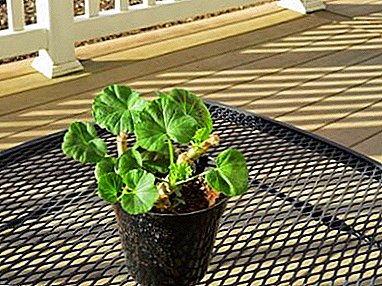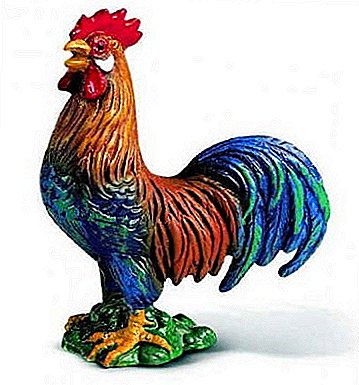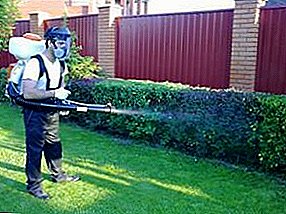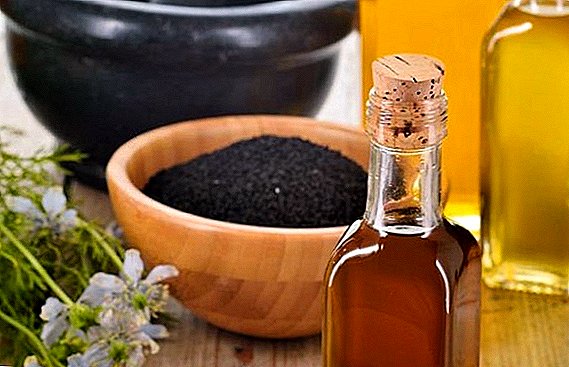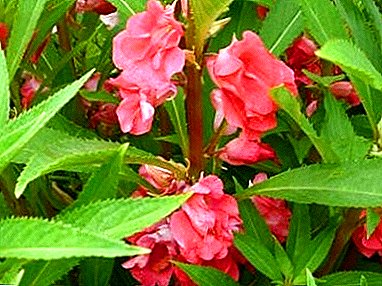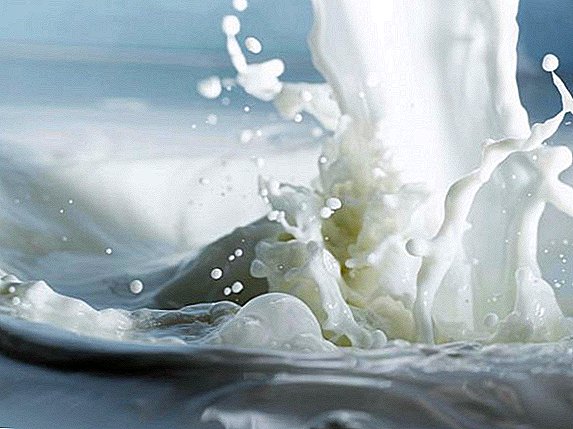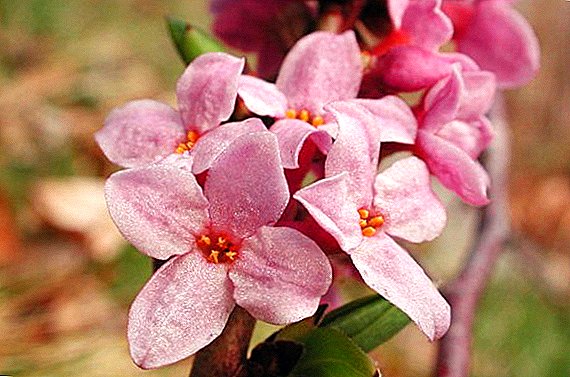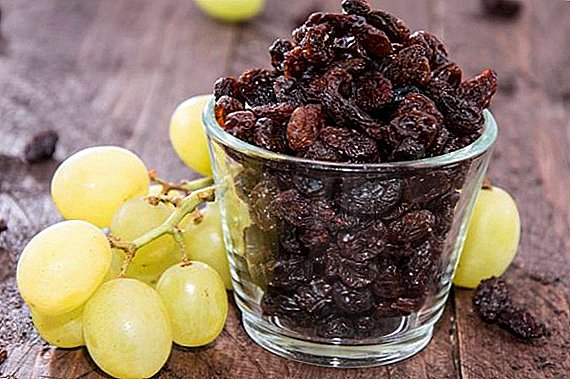
Spice, often found in a mixture with black and white pepper, has nothing to do with it.
This berry is the fruit of the tree Shinus, which is also called the pepper tree or Peruvian pepper..
Used in cooking in combination with other spices and as a separate seasoning.
It is used for therapeutic and cosmetic purposes.
You will learn more about this exotic plant from our article.
Pink pepper - what is it?
 Pink pepper is produced from two types of shinus - soft (Schinus molle) and pistachio-leaved (Schinus terebinthifolius).
Pink pepper is produced from two types of shinus - soft (Schinus molle) and pistachio-leaved (Schinus terebinthifolius).
The fruits of these trees are small, round, soft, with a hard bone inside.
In appearance they resemble peppercorns, only pink in color, for which they got their name - pink pepper.
Shinus is a member of the Sumach family. It has a tree and shrub form, grows up to 6 m.
Shinus soft (molle) - the most common type. This tree with a drooping crown, resembles willow.
It blooms with small flowers, collected in inflorescences in the form of a panicle. Fruits - drupes with a soft shell.
Homeland plants
Occurs pink pepper from tropical and subtropical areas of Central and South America. It grows in Mexico, Brazil, Peru, Guatemala and other countries.
It is often used as an ornamental plant and planted in parks and on the streets.. It grows best in cities along the coast.
Collecting and processing fruits
Only ripe fruits are harvested.. To save the pink color they are dried by freezing or canned - pickled or salted. Fresh berries are stored no more than six months. Ground pink pepper is not produced (as, for example, black), as it is usable only immediately after grinding.
Another product from the fruit of shinus is an aromatic oil. It is obtained from fruits and other parts of the tree by steam distillation.
Is it possible to grow at home?
Fans of breeding spice plants at home can replenish their collection tire. It grows into a beautiful ornamental shrub, which, under certain conditions, will bear fruit. It can be grown as bonsai.
Important! The juice of the stems and branches of the shinus is toxic and can cause dermatitis, in addition, flowering shinus can cause allergies.
Landing
 It is possible to plant a tire with seeds - with pink peppercorns.
It is possible to plant a tire with seeds - with pink peppercorns.
It is better to buy in the market, according to the experience of flower growers, they have better germination.
Before they are planted, they are soaked in water for a day and are planted in a wet sand-peat mixture of 1 seed per pot..
For germination need a temperature of about 20 degrees and good lighting. Mineral fertilizers are added to the soil (30 g per 10 liters of soil).
Planting seeds do in the fall.
Conditions of detention
To Shinus manifested itself in all its decorative, it is necessary to create the conditions.
- Temperature.
In the summer, the best temperature for a shenus is 20-25 degrees, it tolerates well lowering the temperature to 5-10 degrees. In summer, the plant can be kept in a greenhouse.
In winter, it is advisable to put in a greenhouse with a temperature of 10-15 degrees. Shinus should be protected from drafts, but it needs airing.
- Watering.
Water the plant moderately, even in summer. In winter, watering is needed only after the soil dries.. Water with soft, settled water at room temperature.
- The soil.
The composition of the soil for shinus is not very important. Although the plant prefers fertile, rich in organic soil mixed with sand. It should be loose and well drained, Shinus does not tolerate its waterlogging.
- Lighting.
Shinus, as an inhabitant of the tropics, loves bright light. For him, you need to choose a place so that it is bright, but without a hot direct sun.. Perfectly suited southern, western and eastern windows. At the south window in the midday time pritenyayte flower.
- Top dressing.
Feed shinus organic fertilizers with a low nitrogen content. They must be alternated with mineral complexes for indoor plants. Top dressing is done only in summer once every 2-3 weeks.. The rest of the year, the plant is not fertilized.
Transfer
They transplant the tire only if the pot becomes small to him. Symptom - intertwining the roots of an earthy coma. The plant is transplanted by transshipment into a larger pot. The young bus needs an annual transplant, an adult needs 1 time in 2-3 years ...
Important! Do not forget to change the substrate during transplantation.
Breeding
 Propagated by shinus seeds (described in the section "Planting and cultivation"), less cuttings and layering.
Propagated by shinus seeds (described in the section "Planting and cultivation"), less cuttings and layering.
Time for grafting - early spring.
The cuttings are placed in a container in fertile soil and kept at a temperature not lower than 20 degrees.
After rooting, they are seated in separate pots. In the future, take care of as an adult plant.
Flowering and fruiting
During flowering, the plant exudes a pleasant aroma. It blooms from April to July.
After flowering shrub fruiting. During this period, the home shinus is especially decorative, thanks to clusters of pink berries against the backdrop of greenery.
Important! Fresh fruits of shinus are not consumed in food, they are poisonous
Pruning
Shinus tolerates pruning. At home, it often grows as a liana. In order for it to bush, it can be cut, then it will give new shoots. In cities where the tire grows as an ornamental shrub or tree, it is often cut to a stump, after which it grows beautifully again.
Problems and Diseases
Shinus differs enviable immunity and he is not afraid of disease and pests. The only problem may be root rot. Occurs in the case of bogging of soil in a pot.
Application of fruits
Shinus is a difficult plant, its use in the form of seasoning is specific and not always safe.
In cooking
 In places of natural growth, it is widely used in food.
In places of natural growth, it is widely used in food.
Many national dishes such as sweets, drinks, confectionery do not do without his participation..
It has a sweet and sour taste with hints of anise, juniper and a hint of ginger in the aftertaste.
As spice is added to fish, vegetables, seafood and meat. They fill it with salads and add to sauces.
Included in the seasoning "4 peppers" along with black, white and green.
Bought pink pepper rarely preserves flavor and aroma. To wake him up, dry the peas in a dry skillet over moderate heat.
Ground pink pepper is used immediately after grinding, otherwise it will completely lose its taste.
Use of essential oil
Essential oils are contained in all parts of the tire. They are widely used in cosmetology, as they have a healing, anti-cellulite, tightening and tonic effect. Used to treat herpes, acne, dermatitis and hair loss..
In addition, the oil is used for bathing, massage, compresses and for the enrichment of creams.
Beneficial features
As a medicinal plant, pink pepper is used in the treatment of arthritis, rheumatism, cardiovascular and respiratory diseases. Its use in small quantities normalizes the work of the digestive system, helps with diarrhea. It has antimicrobial and tonic properties..
Rich in vitamins (C, B, PP and E) and minerals (potassium, calcium, magnesium, zinc, etc.)
Contraindications
Do not use pink pepper for people prone to allergies. In large quantities it is poisonous.
Growing pink pepper at home is only possible with a decorative purpose. As a seasoning, you can use only the fruits processed by an industrial method.
- kinds;
- description, types and useful properties of the plant;
- growing secrets;
- growing in a greenhouse.


